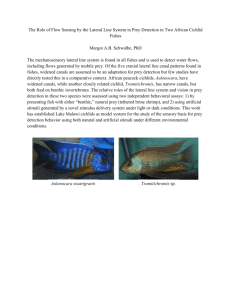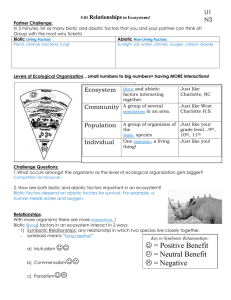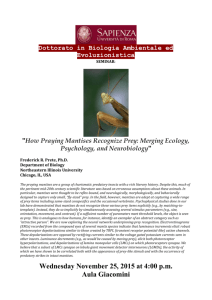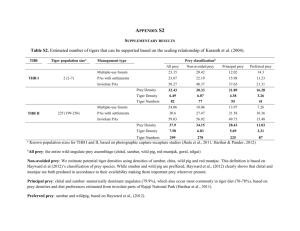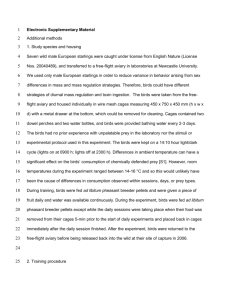10575_Konishi
advertisement
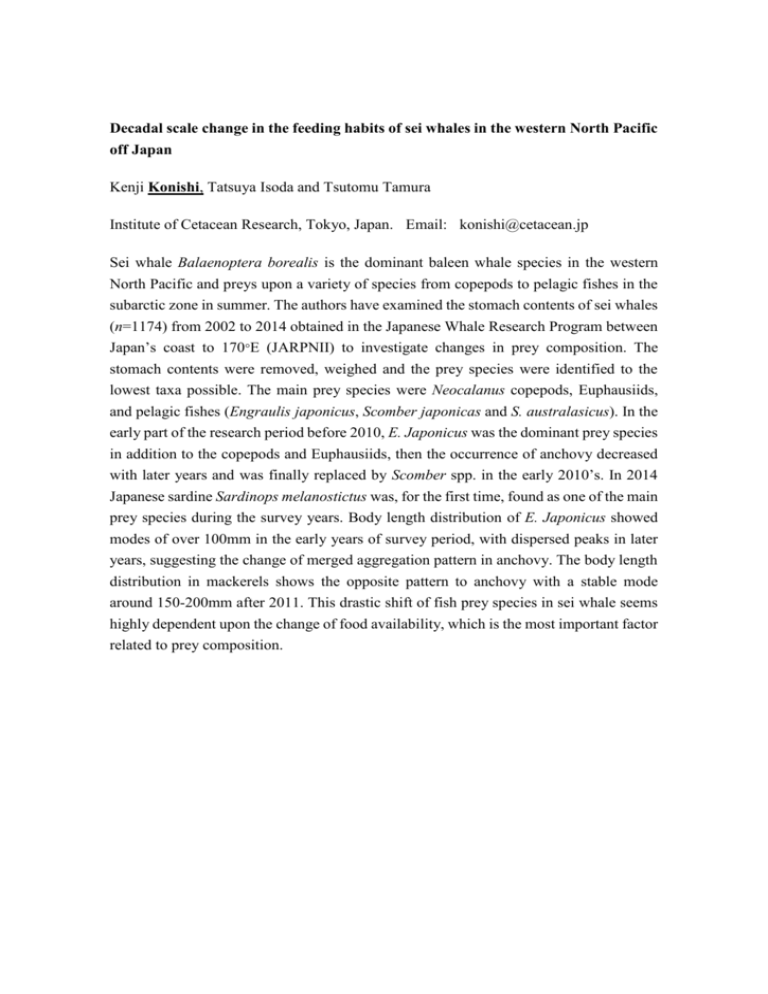
Decadal scale change in the feeding habits of sei whales in the western North Pacific off Japan Kenji Konishi, Tatsuya Isoda and Tsutomu Tamura Institute of Cetacean Research, Tokyo, Japan. Email: konishi@cetacean.jp Sei whale Balaenoptera borealis is the dominant baleen whale species in the western North Pacific and preys upon a variety of species from copepods to pelagic fishes in the subarctic zone in summer. The authors have examined the stomach contents of sei whales (n=1174) from 2002 to 2014 obtained in the Japanese Whale Research Program between Japan’s coast to 170°E (JARPNII) to investigate changes in prey composition. The stomach contents were removed, weighed and the prey species were identified to the lowest taxa possible. The main prey species were Neocalanus copepods, Euphausiids, and pelagic fishes (Engraulis japonicus, Scomber japonicas and S. australasicus). In the early part of the research period before 2010, E. Japonicus was the dominant prey species in addition to the copepods and Euphausiids, then the occurrence of anchovy decreased with later years and was finally replaced by Scomber spp. in the early 2010’s. In 2014 Japanese sardine Sardinops melanostictus was, for the first time, found as one of the main prey species during the survey years. Body length distribution of E. Japonicus showed modes of over 100mm in the early years of survey period, with dispersed peaks in later years, suggesting the change of merged aggregation pattern in anchovy. The body length distribution in mackerels shows the opposite pattern to anchovy with a stable mode around 150-200mm after 2011. This drastic shift of fish prey species in sei whale seems highly dependent upon the change of food availability, which is the most important factor related to prey composition.

